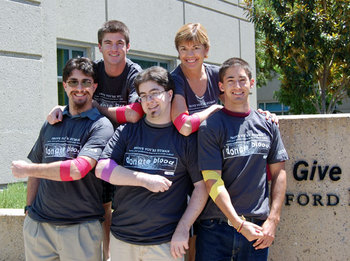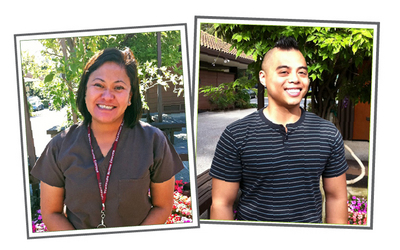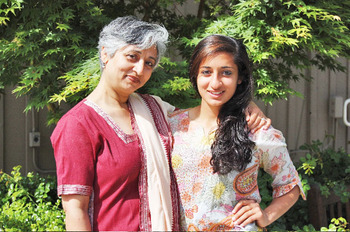Archives
August 19, 2011 at 8:54 am
Published by Stanford Blood Center
By John Williams, Marketing Manager, Stanford Blood Center
In 2009, during the height of the recession, Stanford Blood Center ran a promotion in which blood donors who donated during a two-week period were invited back to a career networking workshop, resume clinic, and job fair. The event, called "Giving Blood Works," was a hit with job-seekers and a win-win for the unemployed and the recipients of the life-saving blood products. And let's not overlook the benefit to the employers. After all, we like to think that someone who is willing to donate blood to help save a life must be a good job candidate!
August 12, 2011 at 10:12 am
Published by Stanford Blood Center
By Billie Rubin
Towards the end of WWI, blood collection equipment consisted of a 1,000cc glass bottle with two perforated rubber stoppers. Glass tubing through each stopper was attached to rubber tubing, each with a needle at the end. One needle was for the donor, the other for the patient (probably one soldier to another), and suction was created with a syringe.
August 10, 2011 at 10:05 am
Published by Stanford Blood Center
By John Williams, Marketing Manager, Stanford Blood Center

It's heartwarming when, in this time of technology-based connectivity, you see a family doing things together. In this case, Mary Sullivan and her sons Tom, Dan, Greg and Steve donated blood for the community as a family. Ironically, it was a technology-based promotion that drove this wonderful group into Stanford Blood Center that day.
August 4, 2011 at 9:29 am
Published by Stanford Blood Center
By Brooke Wilson, Communications Manager, Stanford Blood Center

You're minding your business, going about your day, even doing something good for your health by popping into the gym for a workoutthen suddenly a seizure sets in and you're on the ground convulsing, foaming at the mouth, and unable to communicate. Not only has your day taken a dramatic turnbut your life may be in jeopardy. What happens next?

August 3, 2011 at 4:20 pm
Published by Stanford Blood Center
Hello Stanford Blood Center donors and friends! My name is Isabel Stenzel Byrnes and I'm a social worker and health educator, currently working for the Lucile Packard Pediatric Weight Control Program. I have a twin sister named Anabel, who is a genetic counselor at Lucile Packard Children's Hospital. We'd like to share our personal story with you in this blog.
July 29, 2011 at 3:32 pm
Published by Stanford Blood Center
By Billie Rubin
In an interview with National Public Radio (NPR), Dr. Christine Cserti-Gazdewich, a hematologist at the University of Toronto, educates us on the history of blood types.
July 28, 2011 at 11:01 am
Published by Stanford Blood Center
By Julie Ruel, Social Media Manager, Stanford Blood Center
At Stanford Blood Center we collect several different types of blood products from our volunteer donors. All products have different functions pre- and post-donation. In other words, before and after they leave your body, they each serve different purposes. For the scope of this article, I'll focus on red blood cells (RBCs) collected during a whole blood donation and platelets collected during an ABC donation. These are the two most common products we draw, accounting for about 99% of our total donations in a year.

July 20, 2011 at 2:06 pm
Published by Stanford Blood Center
I will never forget how stunned I was when I got an email from Karen on March 5, 2009 to announce her sons arrival. It started "Quinn Frederick Bossow was born on Tuesday morning. Unfortunately, he is in extremely critical condition at Lucile Packard Children's Hospital." I immediately visited the blog she had created to keep family and friends updated on his condition.
July 15, 2011 at 3:28 pm
Published by Stanford Blood Center
By Billie Rubin
Cryoprecipitate is a blood product made from frozen plasma. The plasma is slowly thawed, then sent through a centrifuge, a machine that spins and sorts blood components based on their masses. The "cold precipitate" protein that is left behind after most of the liquid plasma is removed is the cryoprecipitate.
July 13, 2011 at 2:24 pm
Published by Stanford Blood Center
By Deanna Bolio, Public Relations Associate, Stanford Blood Center

Fifteen-year-old Maya Israni has been around blood drives since she was no taller than the Canteen table. Today, Maya is the youngest blood drive coordinator for a community blood drive. Maya was six when her mother, Sonoo, hosted the first blood drive at Ladera Recreation District, which she did in response to the September 11, 2001 tragedy.




